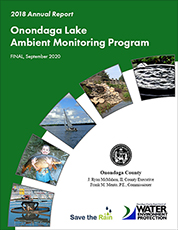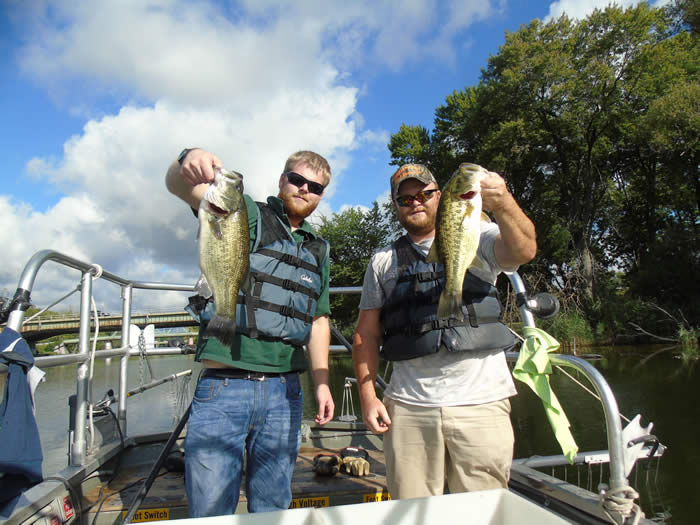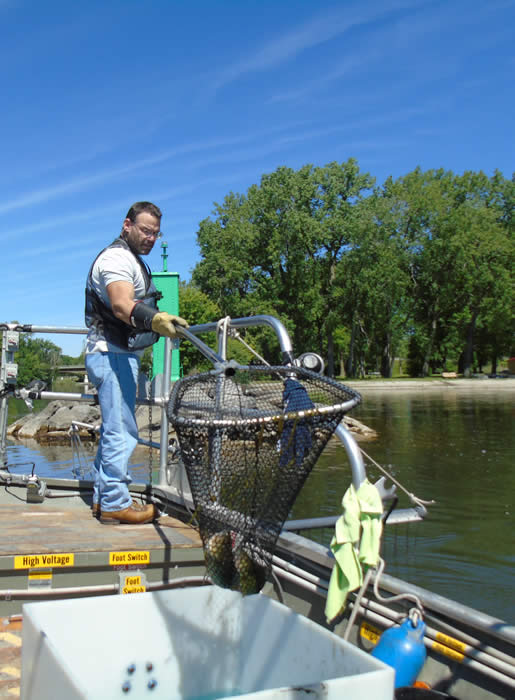Celebrating a Decade of Improvements
 21ST CENTURY INFRASTRUCTURE FOR A CLEANER ONONDAGA LAKE 21ST CENTURY INFRASTRUCTURE FOR A CLEANER ONONDAGA LAKE
Advanced wastewater treatment upgrades in 2004 and 2005 dramatically improved water quality conditions in Onondaga Lake. The lake will continue to benefit from ongoing optimization of treatment processes at the Metropolitan Syracuse Wastewater Treatment Plant (Metro).
The Onondaga County Save the Rain (STR) Program has been in effect for 9 years. The County has completed construction of all gray infrastructure projects required in the ACJ, including milestone projects such as the Clinton and Lower Harbor Brook Storage Facilities. The gray infrastructure projects are enhanced by the County’s use of green infrastructure. Indeed, the combination of the two technologies has succeeded in exceeding the CSO program’svolume capture goals. Going forward, the County will focus on optimizing the performance of its CSO control facilities, while continuing to implement green infrastructure in priority areas, perform maintenance on both gray and green facilities, implement best management practices (BMPs) and floatables control measures, and monitor system performance. Green infrastructure solutions are being implemented at County facilities and in other urban areas to help capture and reuse urban storm runoff before it enters the CSO system. It was estimated that the annual combined sewage percent capture in 2016 exceeded 97.6%, which above the goal for 2018.
REMARKABLE IMPROVEMENTS IN WATER QUALITY
Water quality conditions in the northern two-thirds of Onondaga Lake were suitable for swimming throughout the summer of 2015. Although there is no public bathing beach at Onondaga Lake, bacteria levels and water clarity consistently meet regulatory standards for swimming throughout most of the lake.
And An Improving Fish Community…
Changes in the fish community of Onondaga Lake have occurred as water quality and habitat conditions have improved. Fish communities are good indicators of aquatic ecosystem conditions because they integrate physical, chemical, and biological conditions and express them in terms of species composition, age and growth characteristics, and reproductive success. The Largemouth Bass is one of Onondaga Lake’s largest fish, and the most popular sport fish.
Additionally, species richness has gradually increased since 2000. A total of 30 adult species were captured during the adult fish community survey in 2015. Since 2000, more than 166,000 individual fish have been captured or observed from Onondaga Lake by Onondaga County’s sampling efforts, representing fifty-three species.
 |

|
 |
| Click on Report above to view (.pdf) |
CONTINUING PROGRESS IN THE RECLAMATION OF ONONDAGA LAKE
The County’s Save the Rain program supports innovative stormwater management. Onondaga County is conducting a phased program of combined sewer overflow (CSO) remediation with the goal of capturing or eliminating no less than 95% of CSO volume by 2018. This goal was achieved in 2014, four years ahead of schedule. To meet this goal, the County initiated the Save the Rain program, which is implementing green and gray infrastructure for removal of stormwater from the combined sewer system through green infrastructure projects, CSO storage with conveyance to Metro, and elimination of CSO discharge points.
To-date, 180 green infrastructure projects have been completed as part of the “Save the Rain” initiative (http://savetherain.us/), reducing inputs of stormwater runoff and pollution to Onondaga Lake and its tributaries by 123 million gallons annually and providing CSO reduction of approximately 59 million gallons per year according to SWMM simulations. Eleven green infrastructure projects were completed as part of the “Save the Rain” program in 2015. These projects included replacement of traditional pavement with porous pavement, construction of green roofs, installation of bioretention and infiltration systems, removal of pavement from some areas, and other techniques to reduce stormwater runoff. A new County campaign called “Connect the Drops” is engaging the community to help clean up and prevent litter (floatables) from reaching the tributaries and Onondaga Lake.
|








 Live data from Onondaga Lake.
Live data from Onondaga Lake.